Fatayer bi sabanekh is Lebanese spinach pies featuring a delectable sour spinach filling encased in a soft pastry shaped into a triangle.
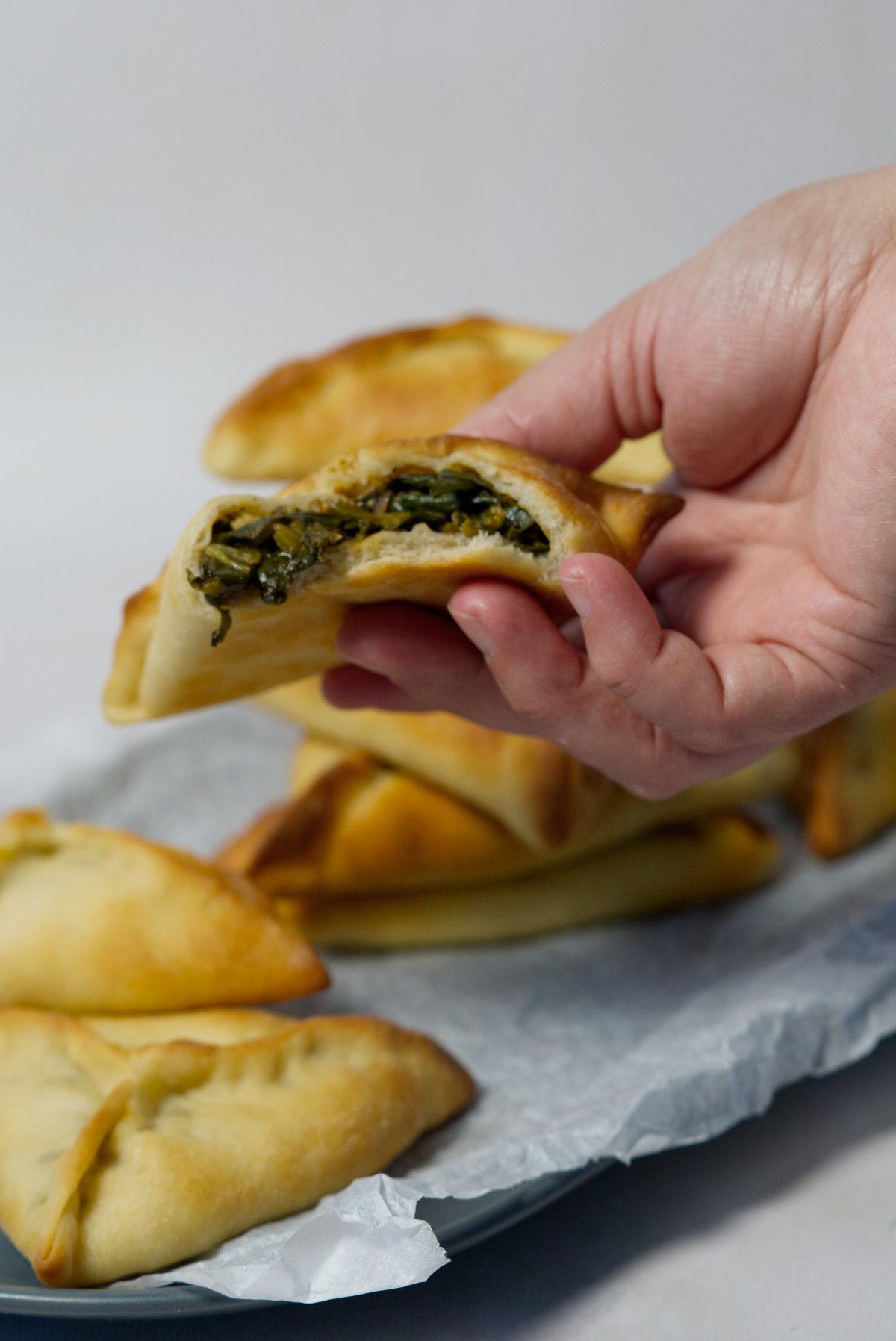
This website receives a commission/fee for each purchase bought through the affiliate links on this website.
Jump to:
What is Lebanese Spinach Pie?
Lebanese spinach pies have the most distinctive flavor.
The exquisite filling mix of spinach, onion in sumac and pomegranate molasses is encased in a soft, yet crispy pastry.
These are known as fatayer bi sabanekh, or sometimes called spinach fatayer.
How to pronounce fatayer bi sabanekh
Fatayer (فطائر) is the Arabic word for pie. It is pronounced as fah·ta·yerr
Bi sabanekh are pronounced as be sah·ba·nekh and are the Arabic words for ‘with spinach’.
Fatayer bi sabanekh translates from Arabic to spinach pie on English.

As a child, I would watch my Mum prepare spinach fatayer, and I would sneak in a spoonful of the filling mixture or lick a spoon with left over pomegranate molasses. As an adult, I still do this, haha.
My gosh, I want you to smell the amazing waft of bakery when you bake Lebanese spinach pies. I just love it, it reminds me of Beirut & Tripoli bakeries and how they fill the streets with heavenly aromas (you can of course find these at any Lebanese bakery around the globe).
😋Why you’ll love this recipe
- The flavor is unrivaled by any other spinach pie
- Pies can be frozen and used at a later stage
- These spinach fatayer can be eaten on the go - the perfect hand pie!
- Suitable for vegan and vegetarian diets (although sans cheese)
✔️What You’ll Need
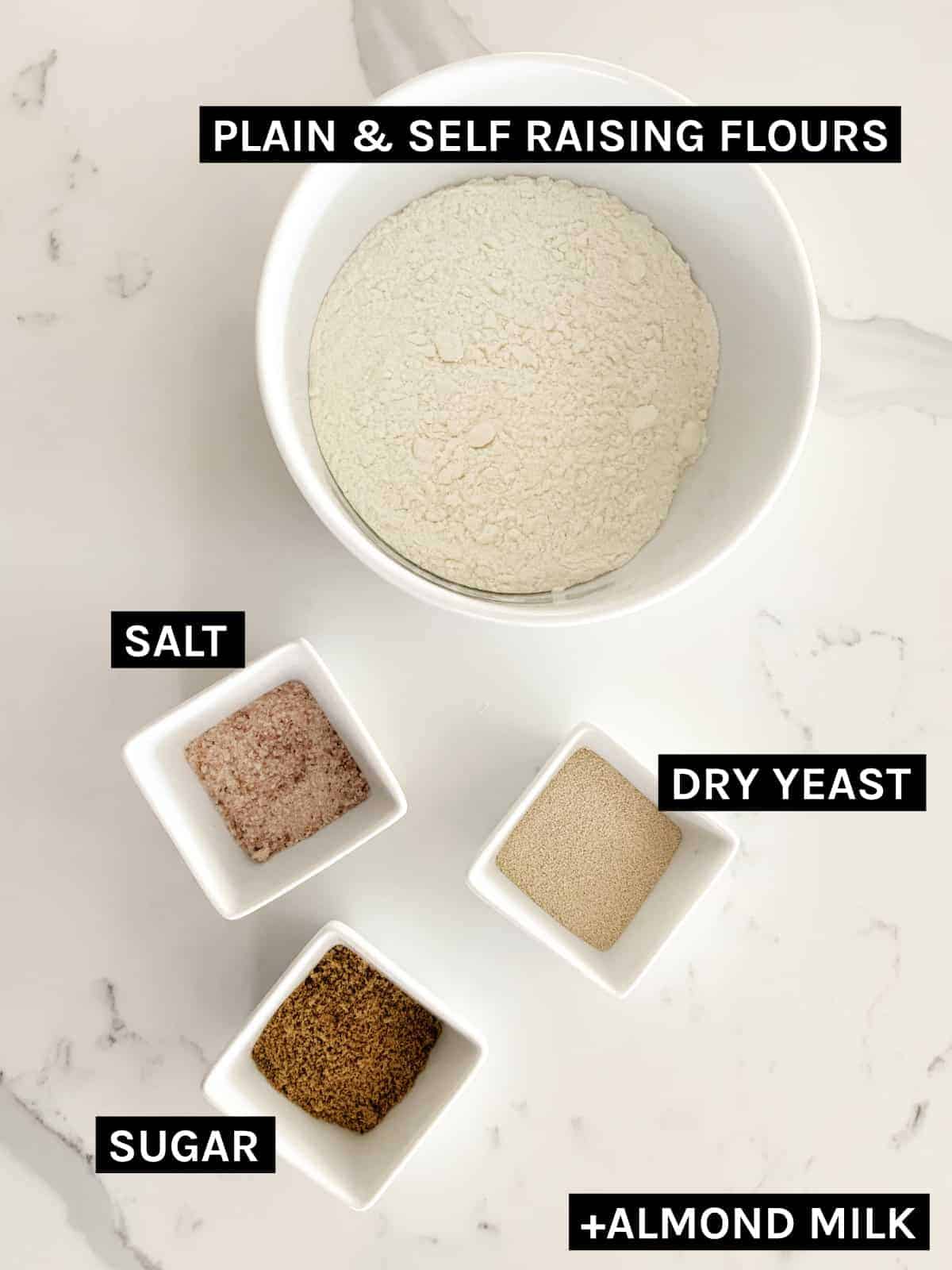
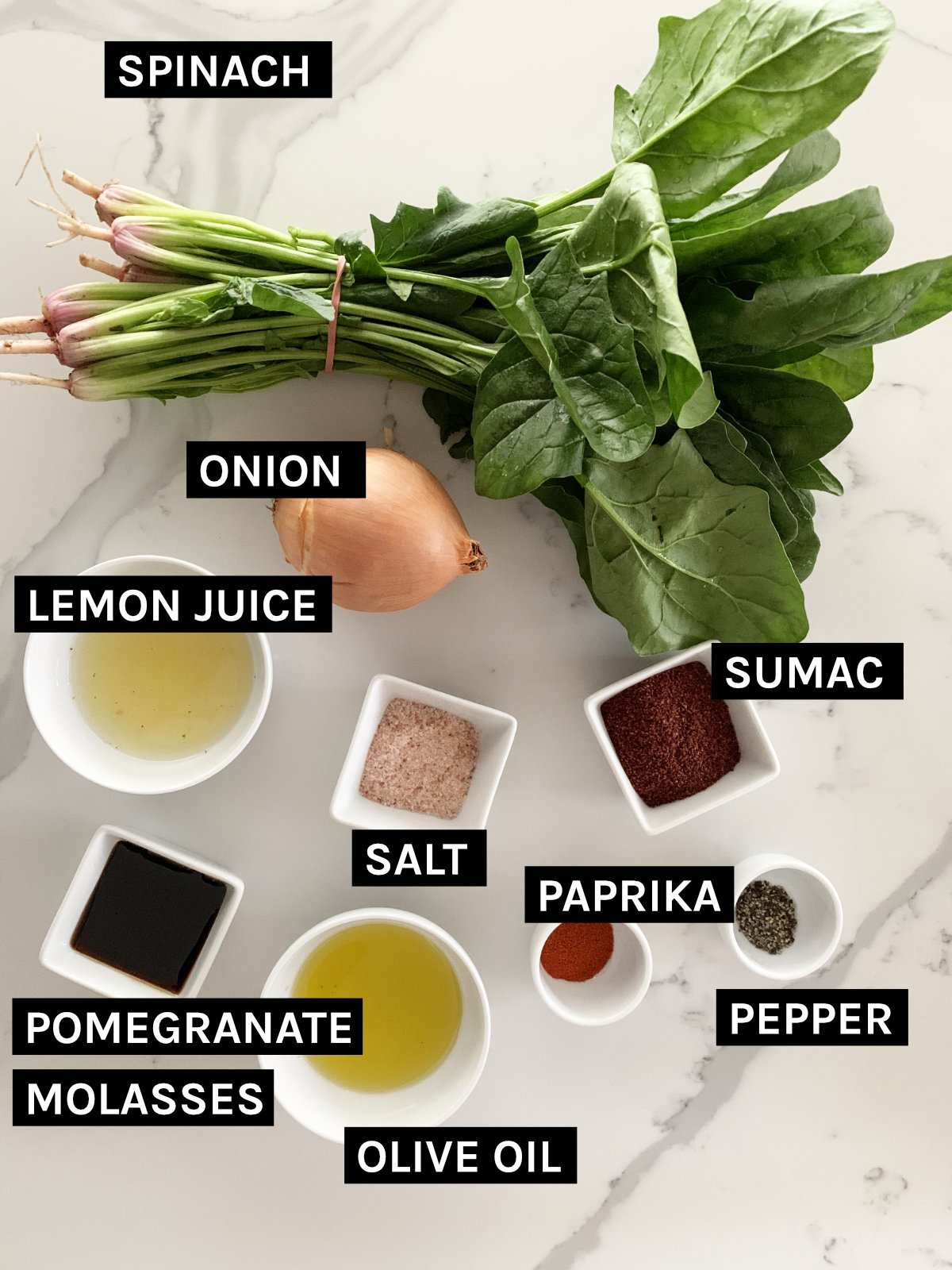
🥘Ingredient Notes
Spinach - baby spinach leaves, English spinach or frozen spinach can be used. If using English spinach, be sure to chop up the stems small
Onion - white or brown onions are good options
Sumac (affiliate link) - a widely used red spice (from the sumac berries) across the Middle East. Sumac has a wonderful sour taste and is a key flavor in this recipe. Sumac can be found in your local supermarket or online (affiliate link). Skipping this ingredient is not recommended.
Pomegranate Molasses (affiliate link) - another key flavor of fatayer bi sabanekh which again has a sweet-sour taste. Available at your local supermarket or purchased online - my go-to brand is Cortas (affiliate link). Skipping this ingredient is not recommended.
Flour - use an even combination of plain (all-purpose) and self-raising (self-rising) flour. Opt for organic flour where possible. The combination of these two flours when baked results in a soft pastry with crispy seams (where the triangle has been closed)
Almond milk - I like to use this as it’s light, you can also substitute this for water or another plant milk that you like.
Dry yeast will help the dough to rise. Ensure that your yeast is not expired.
🔪How to make Spinach Fatayer
Prepare fatayer dough
Step 1 - In a large mixing bowl, add all the dry dough ingredients. Once combined add all the wet ingredients and mix through.
Step 2 - Once the dough starts to stick, use your hands and knead the dough until it no longer sticks. Knead the dough for approx. 4-5 minutes.
Step 3 - Oil proofing bowl and place the dough ball into it. Cover with cling wrap and a tea towel, allow it to rise for an hour in a warm place.
Prepare fatayer bi sabanekh filling
Step 4 - In a large bowl add a teaspoon of salt to the spinach and massage the salt into the leaves. Allow spinach to sit for at least 10-15 minutes. Squeeze out as much moisture from the spinach with your hands, discard juice and place it into a dry bowl.
Step 5 - add all other filling ingredients to the spinach and combine thoroughly. Place the spinach mixture into a colander and set it propped up into a bowl to allow any excess juice to flow out.
Spinach fatayer assembly
Step 6 - Measure out as many 35g dough balls. Approx. 26 balls. Keep these covered with a tea towel whilst working with the dough. An alternative to handling dough is in the video.
Step 7 - Dust a clean flat surface with flour, pat down one dough ball at a time with fingers into a circle, then use a rolling pin to roll out the dough into a larger circle. The dough should have a thickness of approx. 3mm (0.1” inches)
Step 8 - Place filling in the center of the dough, without touching the edge. Fold and seal into a triangle. See video and notes.
Creating spinach triangles - fold two ends of the circle dough, and pinch off center about a ⅓ of the way, then fold the next side. This will create an even triangle. See video.
Step 9 - Place each triangle on a lined baking tray and brush with olive oil (or see this list for egg wash substitutes)
Step 10 - Bake in a pre-heated oven of 220C (430F) until golden brown or (approx. 12-13 minutes). Enjoy warm.
✔️Variations
Switch out spinach with silverbeet greens (do not use the stalk) This is something I do quite a lot, the taste is equally amazing. If you like silverbeet, check out this roundup of easy gluten free vegan Swiss chard recipes.
Switch out the spinach with purslane, similar to this purslane pocket recipe.
💭Pro Tips
Ensure spinach filling is as dry as possible. A soggy filling will result in the pies opening up during baking.
Once the filling has been mixed together, place it into a colander with a bowl underneath it, this will help release any juice.
Keep the filling in the colander whilst using it to make the pies. Chop up the contents of the filling small.
A chunky filling will be harder to handle when trying to seal the dough. Adding salt to taste - I recommend tasting your filling.
Keep all moisture to a minimum. Do not allow any moisture on the dough whilst handling. Moisture will result in the pies not closing at the seams.
Whilst working with the dough, keep it covered under a tea towel or cling wrap to ensure it doesn’t dry out. I prefer to measure out individual dough balls rather than cutting out the dough with a dough cutter 10cm (approx. 4 inches) wide. See video.
Use fingers to initially pat out dough into a circle, then roll out into a larger circle. The dough should be approx. 3mm thick (approx. 1 inch)
Allowing the spinach to sit in salt for 10 minutes helps to expel moisture. Squeeze out as much juice as possible out of the spinach.
Oven - should be really hot, you could bake these at 230C (440F) until golden (my oven at the time of initially releasing this recipe was not reliable so I stuck to the 220C mark - it's important to note each oven varies)
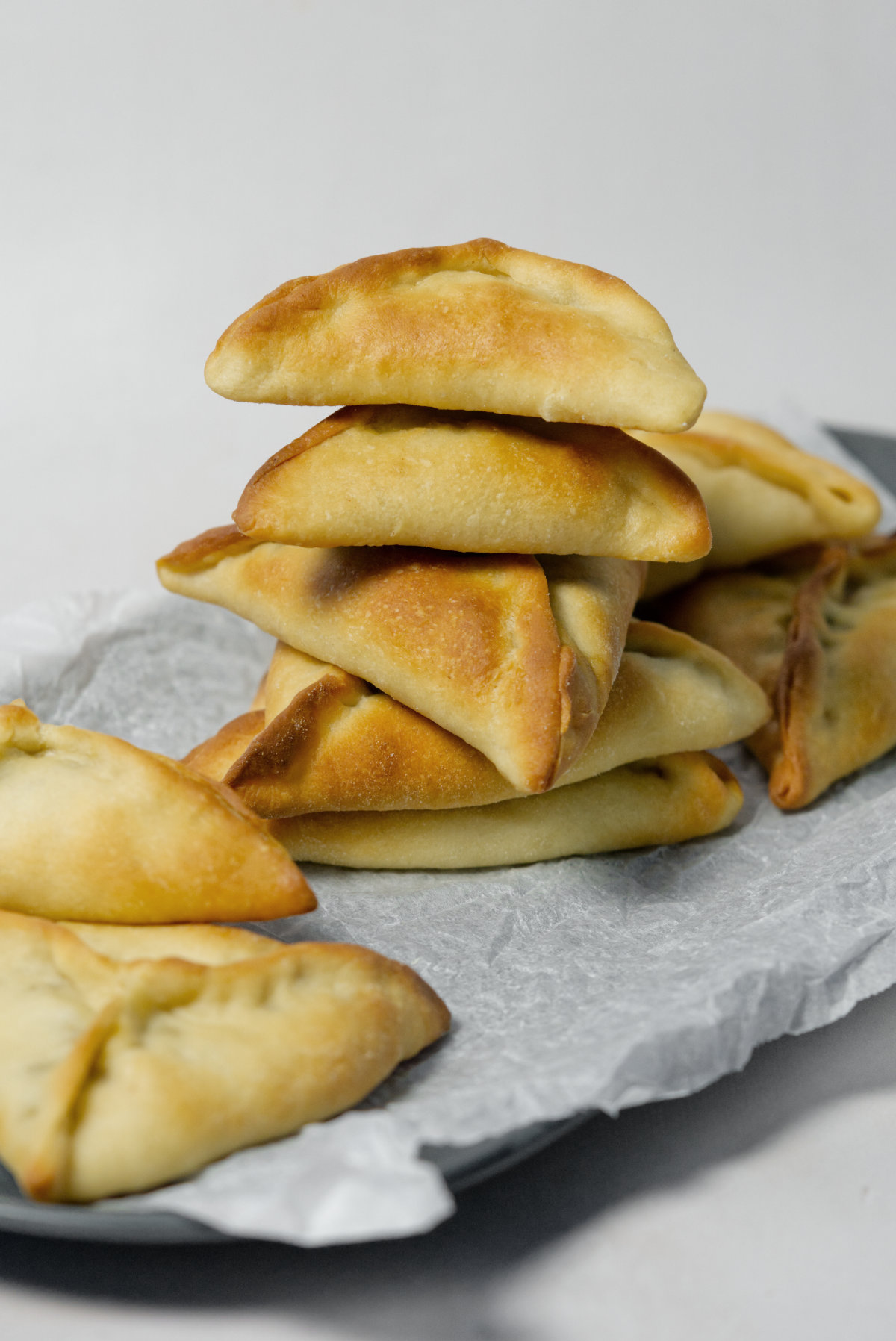
💡What to serve with?
Fatayer bi sabanekh are fabulous on their own or with a side salad, such as fattoush.
I sometimes like to have a soup to start with, something light such as my carrot and celery soup I think it complements the flavors of the Lebanese spinach pies as it is very subtle.
❓FAQ
Spinach fatayer can be stored in an air-tight container in the fridge for a day or two. The pastry may soften further, but they still taste amazing! Just ensure they are completely cooled down before storing ready fatayer.
Yes, it is important to squeeze out as much water as possible prior to mixing it with the filling and using it in the fatayer. Allow your filling to sit on top of a colander to expel excess water. This step will help to alleviate sogginess.
There are a few points to consider to make the perfect spinach fatayer.
1. Do not use a soggy filling, this will cause the pastry to open during baking due to moisture and sogginess.
2. Do not overfill, ensure there is enough dough to create a good seal when closing the triangle
3. Place the filling in the center and do not allow any dampness to touch the dough where it will be sealed, as this will cause the fatayer to open during baking.
🥘Related recipes
This vegan spinach stew is another delicious use of spinach in Lebanese cooking.
As you're interested in vegan pastry recipes, you should check out my perfect vegan party food - zaatar pinwheels.
Or you might want to check out this list of purslane recipes.
Recipe
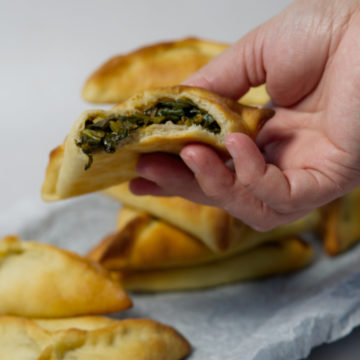
Fatayer bi Sabanekh (Lebanese Spinach Pie - فطائر)
Ingredients
Fatayer Dough
- 250 g Plain Flour + extra for dusting
- 250 g Self raising flour same as self rising
- 1 tablespoon Dry yeast
- 1 tablespoon Coconut sugar
- 1 teaspoon Salt
- 110 ml Olive oil
- 290 ml Almond milk warm
Fatayer Filling
- 1 kg Spinach
- 1 small Onion chopped small
- ¼ cup Sumac
- 1 teaspoon Paprika
- ½ teaspoon Black pepper cracked
- 1½ tbs Lemon juice freshly squeezed
- ¼ cup Olive oil
- 1½ tablespoon Pomegranate molasses
- 1 teaspoon Salt to taste
Additionals
- 1 teaspoon Salt for rubbing into spinach
- 1 tablespoon Olive oil use as needed for brushing fatayer
Instructions
Prepare fatayer dough
- In a large mixing bowl, add all the dry dough ingredients. Once combined add all the wet ingredients and mix through.250 g Plain Flour, 250 g Self raising flour, 1 tablespoon Dry yeast, 1 tablespoon Coconut sugar, 1 teaspoon Salt, 110 ml Olive oil, 290 ml Almond milk
- Once the dough starts to stick, use your hands and knead the dough until it no longer sticks. Knead the dough for approx. 4-5 minutes.
- Oil proofing bowl and place the dough ball into it. Cover with cling wrap and a tea towel, allow it to rise for an hour in a warm place.
Prepare fatayer bi sabanekh filling
- In a large bowl add a teaspoon of salt to the spinach and massage the salt into the leaves. Allow spinach to sit for at least 10-15 minutes. Squeeze out as much moisture from the spinach with your hands and place into a dry bowl.1 kg Spinach, 1 teaspoon Salt
- Add all other filling ingredients to the spinach and combine thoroughly. Place the spinach mixture into a colander and sit it propped up into a bowl to allow any excess juice to flow out.1 small Onion, ¼ cup Sumac, 1 teaspoon Paprika, ½ teaspoon Black pepper, 1½ tbs Lemon juice, ¼ cup Olive oil, 1½ tablespoon Pomegranate molasses, 1 teaspoon Salt
Spinach fatayer assembly
- Measure out as many 35g dough balls. Approx. 26 balls. Keep these covered with a tea towel whilst working with the dough.
- Dust clean flat surface with flour, pat down one dough ball at a time with fingers into a circle, then use a rolling pin to roll out dough into a larger circle. Dough should have a thickness of approx. 2 -3mm (0.1” inches)
- Place filling in the centre of the dough, without touching the edge. Fold and seal into a triangle. See video and notes.
- Place each triangle on a lined baking tray and brush with olive oil.1 tablespoon Olive oil
- Bake in a pre-heated oven of 220C (430F) until golden brown (approx. 12-13 minutes). Enjoy warm.
Video
Notes
- Switch out spinach with silverbeet greens. Do not use the stalk. This is something I do quite a lot, the taste is equally amazing.
- Switch out the spinach with purslane, similar to this purslane pocket recipe.
- Filling - Ensure spinach filling is as dry as possible. A soggy filling will result in the pies open up during baking. Once the filling has been mixed together, place it into a colander with a bowl underneath it, this will help release any juice. Keep the filling in the colander whilst using it to make the pies. Chop up the contents of the filling small. Chunky filling will be harder to handle when trying to seal the dough. Adding salt to taste - I recommend tasting your filling.
- Moisture - Keep all moisture to a minimum. Do not allow any moisture on the dough whilst handling. Moisture will result in the pies not closing at the seams.
- Dough - Whilst working with the dough, keep it covered under a tea towel or cling wrap to ensure it doesn’t dry out. I prefer to measure out individual dough balls rather than cutting out the dough with a dough cutter 10cm (approx. 4 inches) wide. See video.
- Rolling - use fingers to initially pat out dough into a circle, then roll out into a larger circle. Dough should be approx. 2.5mm thick (approx. 1 inch)
- Salting spinach - allowing spinach to sit in salt for 10 minutes helps to expel moisture. Squeeze out as much juice as possible out of the spinach.
- Creating spinach triangles - fold two ends of the circle dough, and pinch off centre about a ⅓ of the way, then fold the next side. This will create an even triangle. See video.
- Storing - whilst vegan Lebanese spinach pies are best eaten immediately, these can be stored in an air-tight container in the fridge for a day or two. The pastry may soften further, but they still taste amazing!
- Oven - should be really hot, you could bake these at 230C (440F) until golden (my oven atm is not reliable so I stuck to the 220C mark - it's important to note each oven varies)
Equipment
Nutrition
N.B., nutrition info is an estimate based on an online nutrition calculator. This will vary based on the specific ingredients you use.
If you enjoyed this recipe, consider supporting my work for the cost of a cup of coffee.



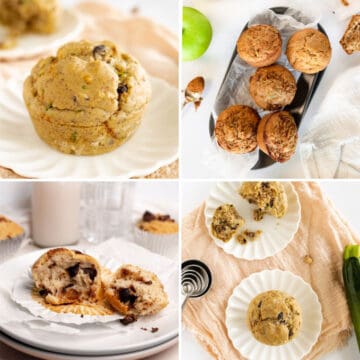





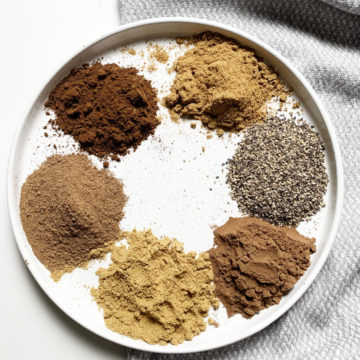
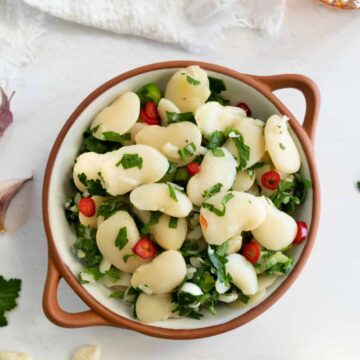
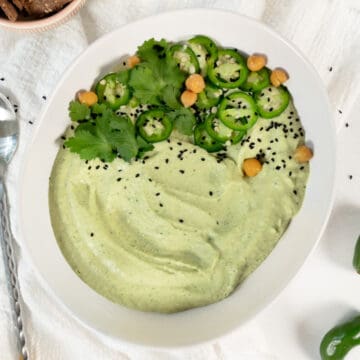
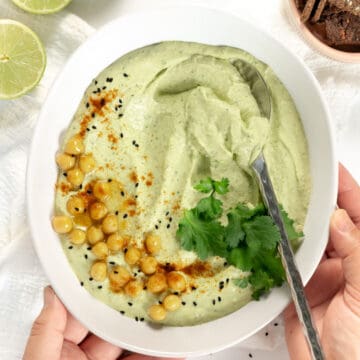
elizabeth joseph
I grew up on spinach pies like this made by my aunts; have not had a decent one in over 40 years. This is great to see and plan to make some soon.
Omar
This spinach pie looks so good. I love food like this and can't wait to make this recipe this weekend. So excited.
Sara
One word: yum! The spinach filling in the soft dough is such a delicious combination. I made these for my family and they all loved them.
Mary
I first tried these at my Farmer’s Market. The vendor serves them with a yogurt and Sumac dipping sauce. I am going to make my own using your recipe! She’ll still get my money for her chutneys. 😀
Yusra
Yislamli hal edan.
They came out just like mom’s used to. Mine weren’t as neat as yours, but the taste was perfect.
Nancy
I simply adore these and have never made them, only bought them at Lebanese grocers in my area (Watertown, Mass) Can I use whole wheat flour for better healthfulness, with the realization that they won't be as tender, or course? Also, for those who are gluten free all together, have you ever tried one of the gluten free flours with these? If so, which do you recommend?
Janelle
hi Nancy,
You should be able to use whole wheat flour, with the view that it will be different (as you know)
As for gluten-free - I am still testing out the various flours before I can comment. Check back in a few weeks 🙂
Enjoy!
J 🙂
Deborah
gluten free possibilities???
Janelle Hama
I will put it into the pipeline! 🙂